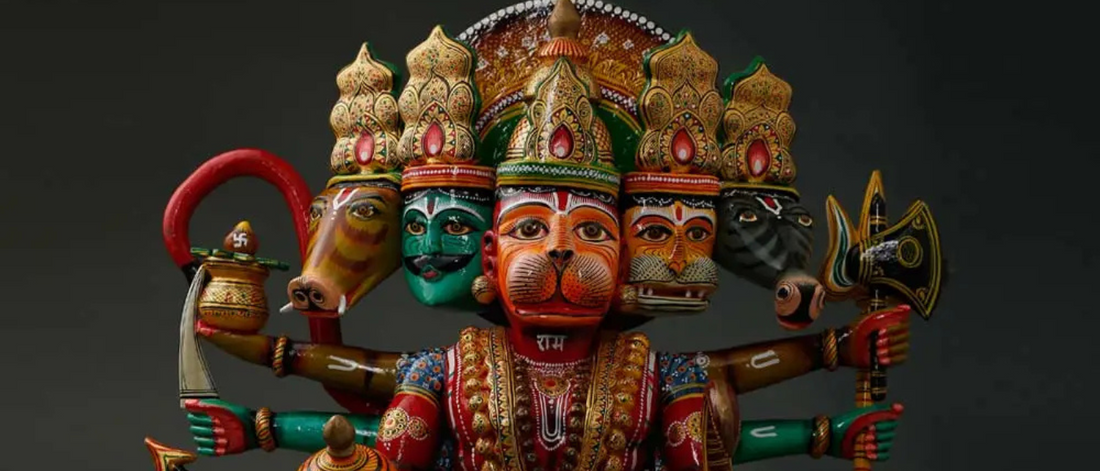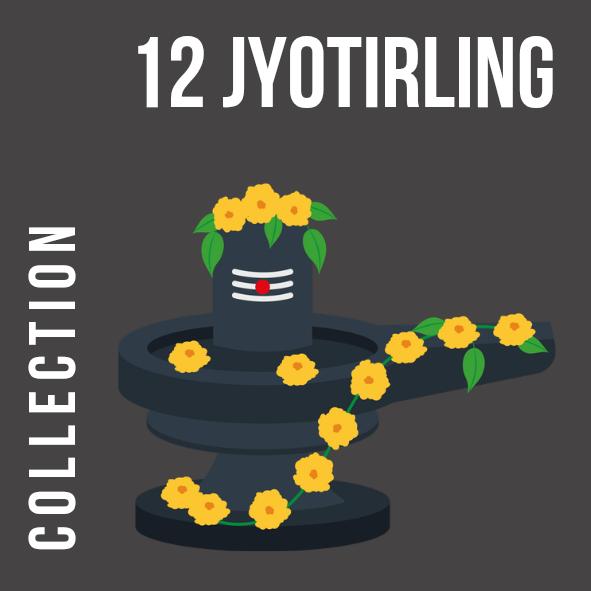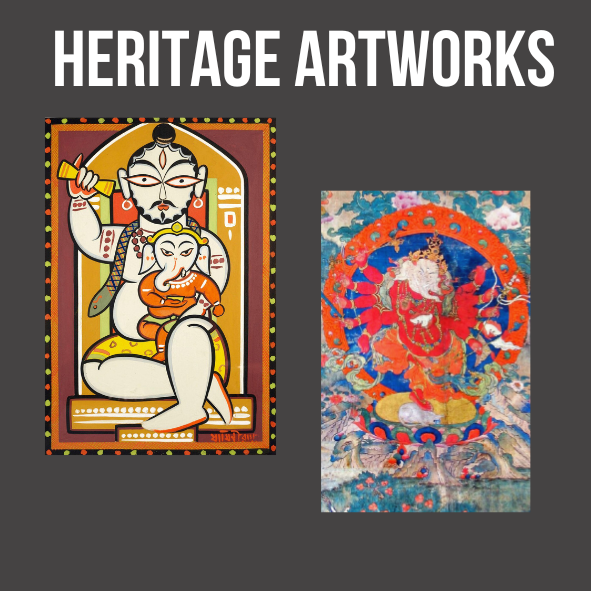
Carving Divinity: The Sacred Art of Banarasi Wooden Handicrafts
Share
Sacred Significance in Sanatan Dharma
Varanasi Wooden Handicrafts are sacred treasures in Sanatan Dharma, bringing divine presence into temples and homes through intricately carved deity idols like Hanuman, Ganesha, and Krishna. Used to adorn puja altars during festivals like Hanuman Jayanti, these pieces are believed to channel divine blessings, such as Hanuman’s strength for protection, connecting devotees to Varanasi’s spiritual traditions.
A Historical Legacy of Craftsmanship
This craft dates back to the Mahabharata era, where Arjuna gifted a wooden Vishnu idol to a Varanasi sage, inspiring generations of woodcarvers, as noted in the card’s description. Artisans have since honed their skills, using sandalwood and teak to create detailed idols, a tradition that flourished under royal patronage in medieval Kashi, preserving this sacred art form.
Where to Find Authentic Wooden Handicrafts
For authentic Varanasi Wooden Handicrafts, visit trusted spots.
- Kashiraj in Vishwanath Gali offers hand-carved deity idols with intricate details, a favorite among pilgrims.
- Shree Handicrafts in Ramnagar specializes in sandalwood carvings, ensuring quality craftsmanship.
- Banaras Art Gallery in Lahurabir provides GI-tagged pieces, reflecting Varanasi’s heritage.
Tips for Experiencing the Craft
Visit artisan workshops in Ramnagar to see craftsmen carving deity idols on traditional tools, a meditative process often accompanied by chants. Shops in Vishwanath Gali, like Kashiraj, allow you to handle pieces, with prices starting at ₹500 for smaller idols. Explore during Ganesh Chaturthi to see these crafts in temple rituals, and set aside time to observe the artisans’ skill.
How to Spot Authentic Banarasi Handicrafts
Look for the GI tag to ensure authenticity. Authentic pieces are hand-carved from sandalwood or teak, with visible natural wood grain and detailed etchings, such as Ganesha’s trunk or Krishna’s flute. They emit a subtle woody scent and feel smooth, not polished with chemicals. Mass-produced items often lack depth in carving and may use synthetic finishes [Web ID: 25].
Immerse in Varanasi’s Carving Traditions
Engage with artisans in Ramnagar to learn about their craft, often a family legacy tied to Sanatan Dharma’s reverence for deity worship. Visit the Sankat Mochan Hanuman Temple, about 5 km away, to see wooden Hanuman idols in use during prayers, reflecting the craft’s spiritual role, deepening your connection to Varanasi’s heritage.
Plan Your Visit
Vishwanath Gali, near Kashi Vishwanath Temple, is a 10-minute walk from Dashashwamedh Ghat or a short auto-rickshaw ride (around ₹100). Visit between 10:00 AM and 6:00 PM, with mornings offering a quieter experience. Bring cash for purchases, allocate 1-2 hours to explore, and wear comfortable shoes for the busy lanes. Use the Varanasi Sacred Seekers Series cards to plan your day.



